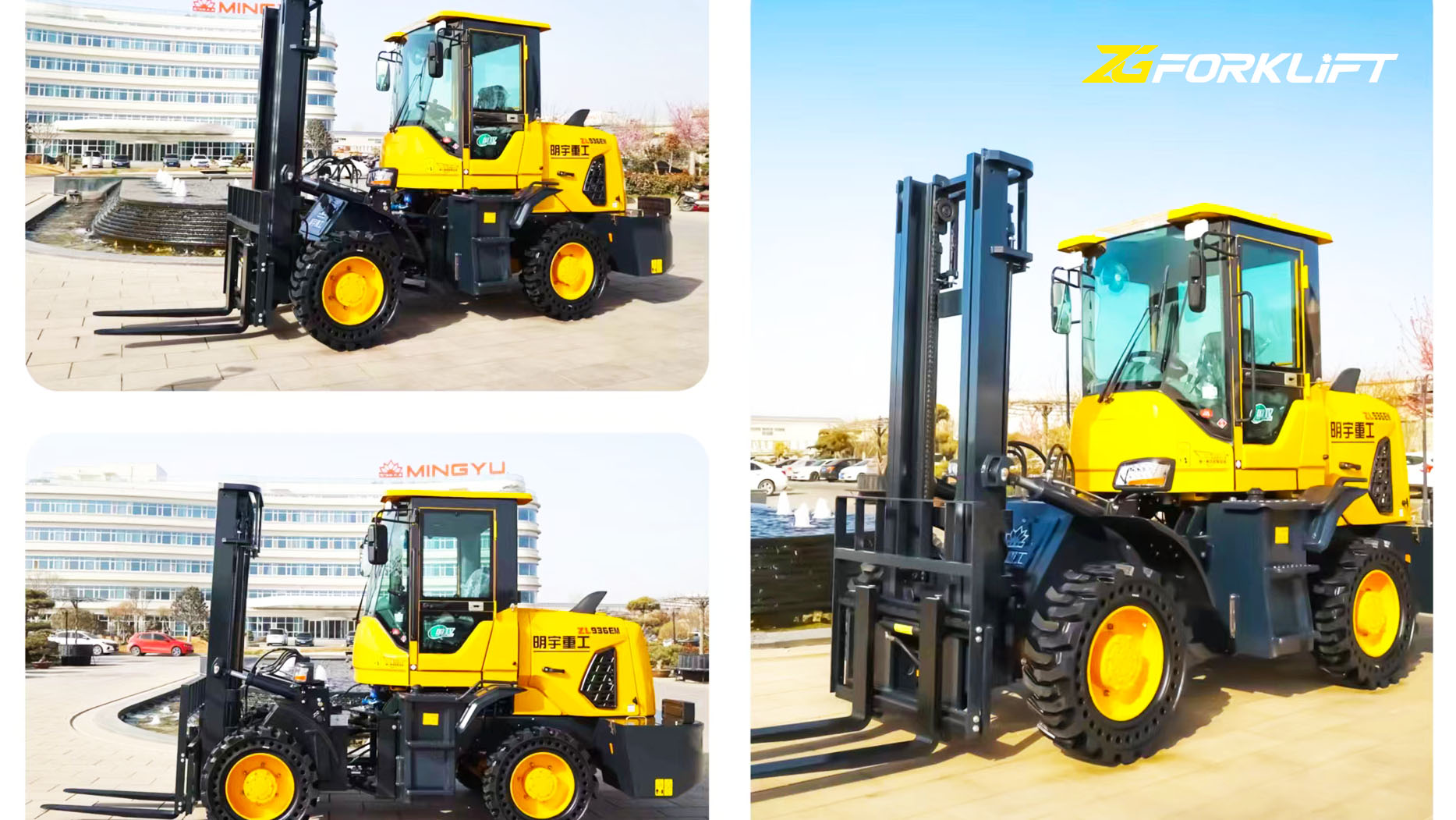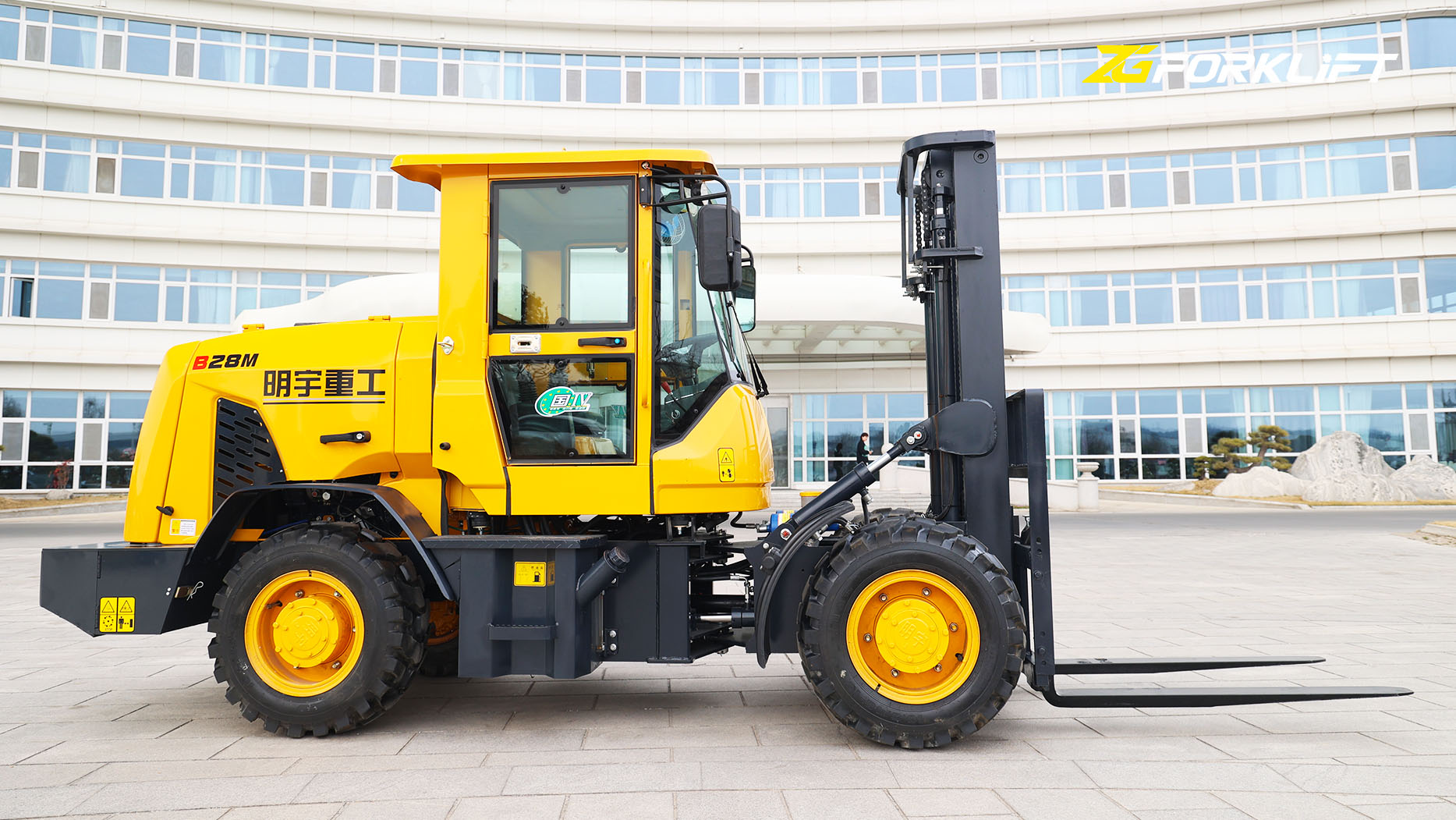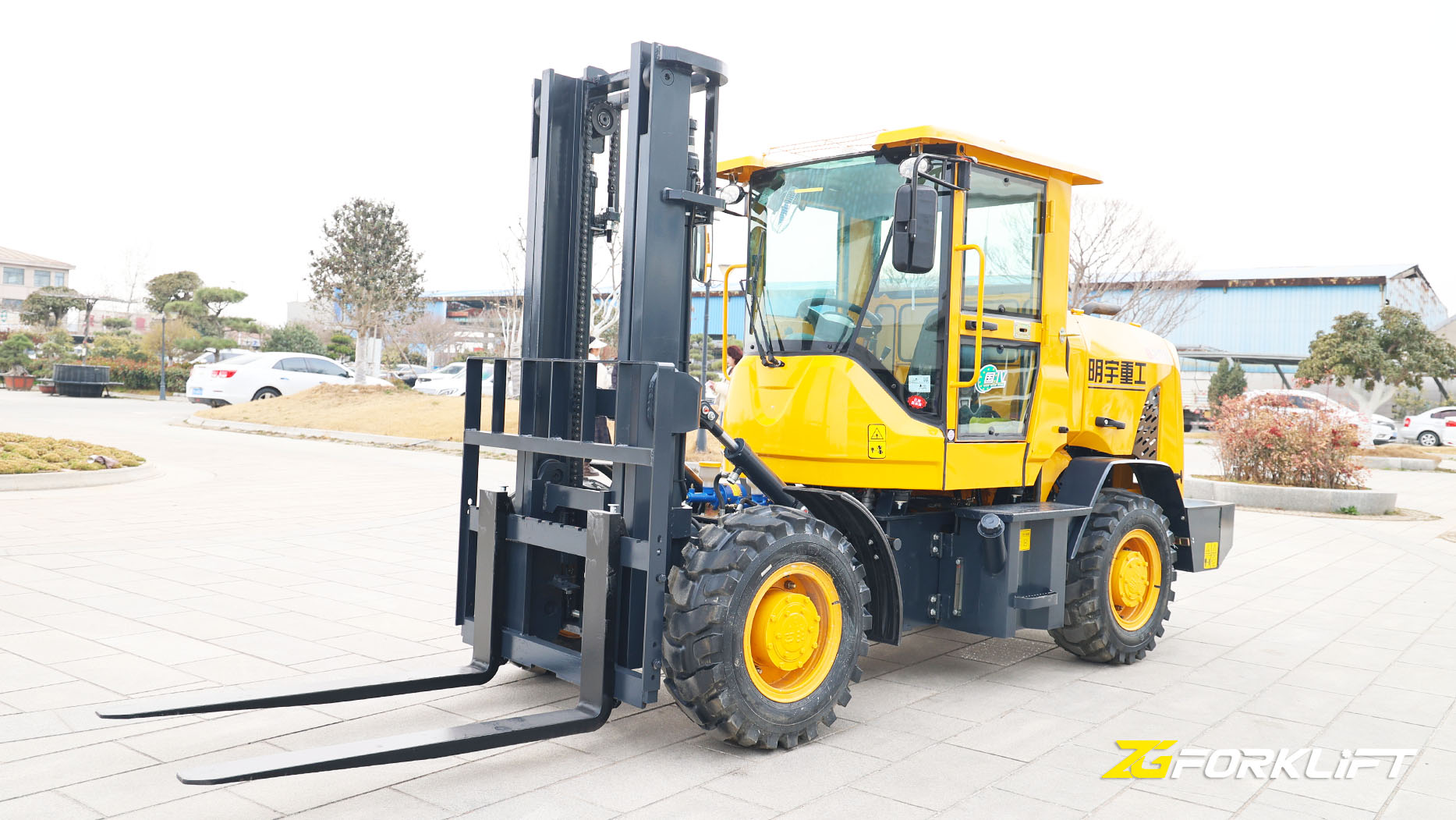Forklifts are indispensable in various industries, from construction and agriculture to warehousing and logistics. However, standard forklifts, designed for smooth, paved surfaces, struggle on uneven terrain. Operating on rough ground presents unique challenges, demanding specialized equipment capable of navigating obstacles, maintaining stability, and delivering reliable performance. This article delves into the world of rough terrain forklifts, exploring their features, types, and the key considerations for selecting the best machine for your specific needs.
The Challenges of Uneven Ground:
Uneven ground presents several challenges for forklifts:
Traction: Standard pneumatic tires can lose traction on loose gravel, mud, or wet surfaces, leading to slippage and reduced maneuverability.
Stability: Uneven surfaces can cause forklifts to tilt, potentially leading to load instability and even tipping accidents.
Ground Clearance: Obstacles like rocks, potholes, and debris can damage the undercarriage of a standard forklift.
Operator Fatigue: Navigating rough terrain can be physically demanding for operators, leading to fatigue and reduced productivity.
Wear and Tear: Operating on uneven ground puts extra stress on the forklift's components, leading to increased wear and tear and higher maintenance costs.
Rough Terrain Forklifts: Designed for the Challenge:
Rough terrain forklifts are specifically designed to overcome these challenges. They feature several key characteristics that distinguish them from standard forklifts:
Large, Pneumatic Tires: These tires provide superior traction and cushioning on uneven surfaces. Their larger size distributes the weight of the forklift over a wider area, reducing ground pressure and improving flotation on soft ground. The pneumatic nature absorbs shocks, providing a smoother ride for the operator and protecting the load.
High Ground Clearance: Rough terrain forklifts have increased ground clearance to navigate obstacles without damaging the undercarriage.
Four-Wheel Drive (4WD): 4WD provides enhanced traction and climbing ability, essential for navigating steep inclines and challenging terrain. Some models offer selectable 4WD, allowing operators to switch between 2WD and 4WD depending on the terrain.
Oscillating Axles: These axles allow the wheels to move independently, maintaining contact with the ground even on highly uneven surfaces. This improves stability and traction.
Robust Construction: Rough terrain forklifts are built with heavier-duty components to withstand the stresses of operating in harsh environments.
Specialized Mast and Lift Mechanisms: Some rough terrain forklifts feature specialized masts and lift mechanisms designed for specific applications, such as telescopic handlers for reaching extended heights.
Types of off-road Forklifts:
Several types of rough terrain forklifts cater to different needs and applications:
Construction Forklifts: These robust machines are designed for the demanding conditions of construction sites. They often feature high lift capacities and are capable of handling a wide range of materials.
Agricultural Forklifts: These forklifts are adapted for use in agriculture, often featuring specialized attachments for handling crops, bales, and other agricultural products. They may also have features like increased ground clearance to navigate fields.
Telescopic Handlers (Telehandlers): These versatile machines combine the lifting capabilities of a forklift with the reach of a crane. They are widely used in construction, agriculture, and other industries where extended reach is required. While not strictly a "forklift," they often handle palletized loads and operate on rough terrain.
Masted Rough Terrain Forklifts: These are more traditional-looking forklifts but with the features necessary for uneven ground. They are generally more compact than telehandlers.
Choosing the Best Forklift for Uneven Ground:
Selecting the right rough terrain forklift depends on several factors:
Terrain Type: The specific type of terrain will influence the choice of tires, ground clearance, and drive system. Consider the severity of the unevenness, the presence of obstacles, and the type of ground material (e.g., mud, gravel, sand).
Lift Capacity: Determine the maximum weight of the loads you will be handling.
Lift Height: Consider the required lifting height for your application.
Operating Environment: Will the forklift be used indoors or outdoors? Will it be exposed to harsh weather conditions?
Duty Cycle: How frequently will the forklift be used? A higher duty cycle may require a more robust machine.
Attachments: Will you need any specialized attachments, such as buckets, clamps, or forks?
Fuel Type: Rough terrain forklifts are available with various fuel options, including diesel, propane, and electric. Consider the availability of fuel and the environmental impact of each option. Diesel remains common for rough terrain due to its power and run time.
Budget: Rough terrain forklifts can be more expensive than standard forklifts. Consider your budget and the total cost of ownership, including maintenance and fuel costs.
Key Features to Consider:
Tire Type: Pneumatic tires are essential for rough terrain. Consider the tire size and tread pattern based on the specific terrain. Foam-filled tires can be a good option in situations where punctures are a concern.
Drive System: 4WD is generally recommended for challenging terrain. Look for models with selectable 4WD for increased versatility.
Ground Clearance: Ensure the forklift has sufficient ground clearance to navigate obstacles.
Oscillating Axles: These improve stability and traction on highly uneven surfaces.
Engine Power: A powerful engine is essential for climbing steep inclines and operating in challenging conditions.
Operator Comfort: Features like adjustable seats, ergonomic controls, and good visibility can reduce operator fatigue and improve productivity.
Safety Features: Look for safety features such as rollover protection structures (ROPS), seatbelts, and warning lights.
Maintenance and Service:
Rough terrain forklifts require regular maintenance to ensure optimal performance and longevity. Pay particular attention to the tires, engine, and hydraulic system. Consult the manufacturer's recommendations for maintenance schedules and procedures.
Conclusion:
Operating on uneven ground demands specialized equipment. Rough terrain forklifts are designed to handle the challenges of rough terrain, providing superior traction, stability, and ground clearance. Selecting the best forklift for your specific needs requires careful consideration of the terrain type, lift capacity, lift height, operating environment, and budget. By understanding the key features and types of rough terrain forklifts, you can choose the right machine to maximize productivity and ensure safety in your operations. Investing in the right equipment will ultimately lead to increased efficiency and reduced downtime in even the most challenging environments.
Post time:Feb.13.2025



